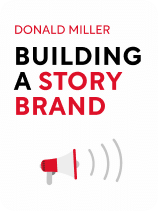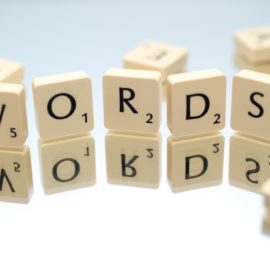

This article is an excerpt from the Shortform book guide to "Building a Storybrand" by Donald Miller. Shortform has the world's best summaries and analyses of books you should be reading.
Like this article? Sign up for a free trial here .
What is a storybrand framework? What is the SB7 formula and how do you incorporate it?
When you create a storybrand framework, you need to incorporate the SB& formula. There are also deviations to this s formula that you can take into account.
Keep reading to find out more about how to create a storybrand framework.
Create Your BrandScript With a Storybrand Framework
We learned that the best way to transmit a message is via story. There are many different ways to write stories—just think about how many books and movies there are out there—but there’s one tried-and-true formula that’s been tested throughout thousands of years of human history.
The author, who founded a company called StoryBrand, has streamlined this formula into a process called the storybrand 7-Part Framework (SB7). Using this framework, you’ll follow a step-by-step process to create a brandscript, which is a document similar to the grids or storyboards that storytellers use to create movies or books. Once you’ve created your brandscript, you’ll be able to draw on its ideas to write copy and create content you can use in your marketing materials.
The brandscript is universal and will work for any size of company anywhere in the world. For example, after implementing the framework, in just four years, the author’s company doubled its revenue.
You can create multiple brandscripts for your company at the overall, divisional, and product levels, and/or for different customer segments. Here’s how the storybrand framework works:
SB7 Framework
There are seven elements to the SB7 framework:
- The hero (customer) wants something and
- Encounters a problem that stops her from getting it.
- She needs the help of a guide (your brand) who has
- A plan to help her solve the problem.
- The guide (brand) must call on her to act.
- The stakes must be clear—what does she stand to lose if she doesn’t act and
- What she might gain if she does act?
Here’s an example of how the storybrand framework looks in a story: In Star Wars: A New Hope, hero Luke Skywalker wants the Rebellion to defeat the Empire and restore peace in the universe (1). His problem is that the Empire is very powerful (2). Guide Obi-Wan Kenobi (3) trains Luke to use a lightsaber and trust in the Force (4) and then pushes him to go help the Rebellion take on the Empire (5). If Luke fails, the Rebellion will be destroyed and the Empire will maintain power (6). If Luke succeeds, the Rebellion will avoid defeat (7) and eventually save the universe in the next movies in the series.
Here’s an example of how the formula looks for a brand: (Shortform example: A college student wants study snacks (1) but doesn’t have any free time in which to cook (2). SnackCrate (3) is a company that mails crates of snacks to subscribers once a month (4). The “Subscribe” button on the SnackCrate website calls the student to sign up (5). If the student doesn’t order the snacks, she’ll be hungry (6). If she does, she’ll feel full and she’ll have more free brainpower to put towards studying (7).)
This seven-part story arc is common and popular because it captures the human condition so well. Everyone doubts themselves and wants to save the day and be a hero.
Prioritize the Plot
When creating your script and storybrand framework avoid including anything that doesn’t advance the plot. Companies are complicated, but customers aren’t interested in detail. You need to distill everything you do into a quickly digestible message to keep people hooked.
In a movie, there are three things that the audience should learn within the first 20 minutes. If they were to pause the movie at any point thereafter, they should also know the same three things:
- The hero’s goal
- The opposition—what’s in the way of the hero achieving her goal?
- The stakes—what happens to the hero’s life is she does or doesn’t reach the goal?
The rules are similar for using a storybrand framework for marketing—the customer should learn the following three things within five seconds of looking at your material:
- What the product (or service) is.
- Why the product will improve her life.
- How she can get the product.
Deviations
When you come across a book, movie, or brand that appears to break from the formula, look closer. Often, the story is using the formula but is avoiding cliche, so the formula is less obvious. For example, in the play Romeo and Juliet, Romeo doesn’t have an obvious guide. In fact, his guide is Juliet, who guides him in how to love. When the SB7 framework is done well, you don’t even notice it’s being employed.
If a book, movie, or brand truly does break the formula, it’s usually to their detriment. (Shortform example: Literary novels sometimes step away from this formula, and while critics might praise them, the general public doesn’t want something different or edgy—they want a story they can understand.)

———End of Preview———
Like what you just read? Read the rest of the world's best book summary and analysis of Donald Miller's "Building a Storybrand" at Shortform .
Here's what you'll find in our full Building a Storybrand summary :
- How storytelling enhances brand marketing
- Why you should make the consumer the hero of your brand's story
- The 7 elements that make marketing work






